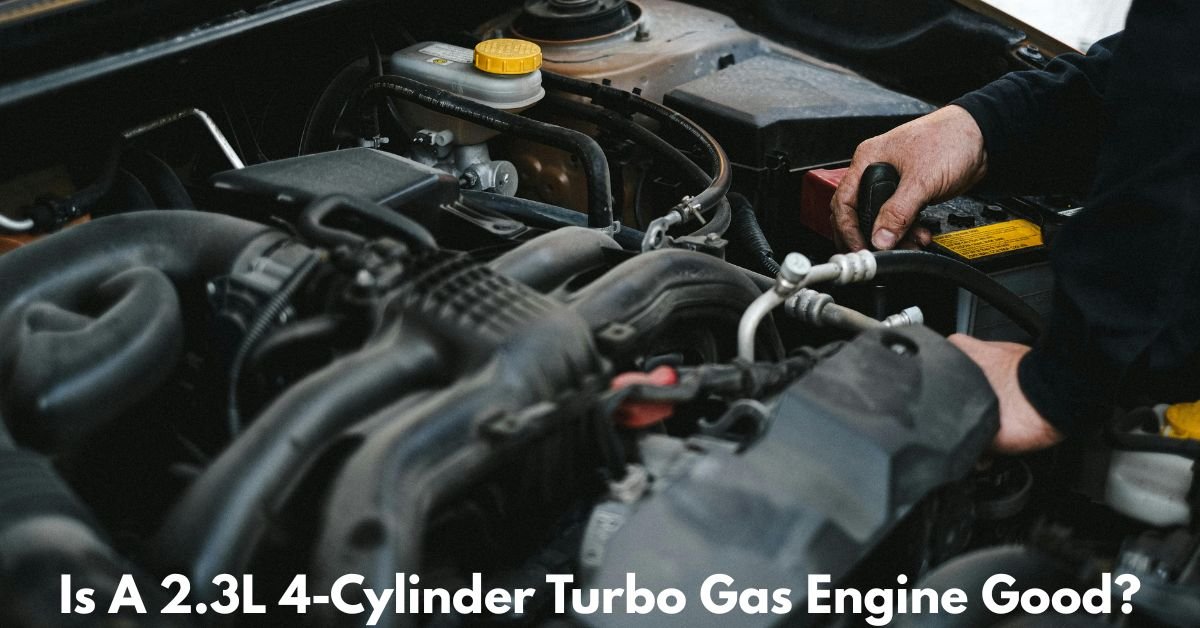When considering a new vehicle, one of the most important factors buyers look into is the engine. It’s the heart of the car and plays a huge role in fuel efficiency, power, reliability, and overall driving experience. Among the many engine configurations available today, the 2.3-liter 4-cylinder turbocharged gas engine has gained a lot of popularity. But is it actually good? The short answer: yes — and here’s why.
Is a 2.3L 4-Cylinder Turbo Gas Engine Good?
A Good Balance of Power and Efficiency
One of the biggest advantages of a 2.3L turbocharged engine is its ability to deliver strong performance without the high fuel consumption of larger engines. Turbochargers work by forcing more air into the engine’s combustion chamber, allowing more fuel to be burned and therefore more power to be generated from a smaller engine displacement.
For example, a naturally aspirated 4-cylinder engine of the same size (2.3L) might produce around 150–170 horsepower, while a turbocharged version could easily reach 270–310 horsepower — a significant boost. This makes the 2.3L turbo engine ideal for those who want power similar to a V6 engine, but with better fuel economy.
Common Vehicles That Use This Engine
Ford, for instance, uses a 2.3L EcoBoost engine in several of their vehicles, including the Ford Mustang, Ford Ranger, and previously in the Focus RS. In the Mustang, this engine can generate up to 310 horsepower and 350 lb-ft of torque, making it one of the most powerful four-cylinder engines in a production vehicle.
Mazda also offers a version of this engine in vehicles like the Mazda6 Turbo and CX-5 Turbo, providing a smooth and responsive driving experience with excellent torque delivery.
These applications show the engine’s versatility — it’s used in sporty coupes, family sedans, and even mid-size pickup trucks.
Turbo Lag and Driving Feel
One potential downside of turbocharged engines is turbo lag — the delay between when you press the gas pedal and when the turbocharger kicks in. However, modern 2.3L turbo engines are engineered to minimize lag, often incorporating features like variable valve timing, advanced fuel injection, and improved turbo designs. Most drivers find the acceleration to be smooth and responsive, especially in newer models.
Must Read: Is 1997 A Bad Year For The 5.4 Engine?

Fuel Economy: Better Than You Might Expect
Compared to V6 or V8 engines with similar performance, a 2.3L turbo engine can be significantly more fuel-efficient. For daily driving and highway cruising, drivers can expect to get 25–30+ MPG, depending on the vehicle and driving habits. This makes it a great option for commuters who still want some excitement behind the wheel without breaking the bank on fuel.
Reliability and Maintenance
Turbocharged engines, including the 2.3L variants, are generally reliable when properly maintained. However, they do have more components than naturally aspirated engines, which means slightly more complexity. Oil changes, using high-quality synthetic oil, and staying on top of scheduled maintenance are essential for longevity.
One thing to keep in mind is that turbo engines run hotter and under more pressure, so cooling systems and engine internals are often more robust. Still, skipping maintenance can lead to problems like turbo failure, carbon buildup, or engine knock — issues that are usually avoidable with regular care.
Who Is It Best For?
A 2.3L 4-cylinder turbocharged engine is perfect for a wide range of drivers:
- Performance enthusiasts who want good acceleration without jumping to a V6 or V8.
- Daily commuters looking for a fun yet fuel-efficient ride.
- Families or small businesses needing a versatile vehicle that can tow light loads or handle weekend trips.
- Budget-conscious drivers who want modern powertrains without paying a premium.
Conclusion
So, is a 2.3L 4-cylinder turbo gas engine good? Absolutely. It offers a great mix of power, efficiency, and versatility, making it an excellent choice for many drivers. While it may not have the brute force of larger engines, it more than makes up for it with smarter engineering and everyday practicality. Just make sure to follow the maintenance schedule, and you’ll have an engine that performs well for years to come.
